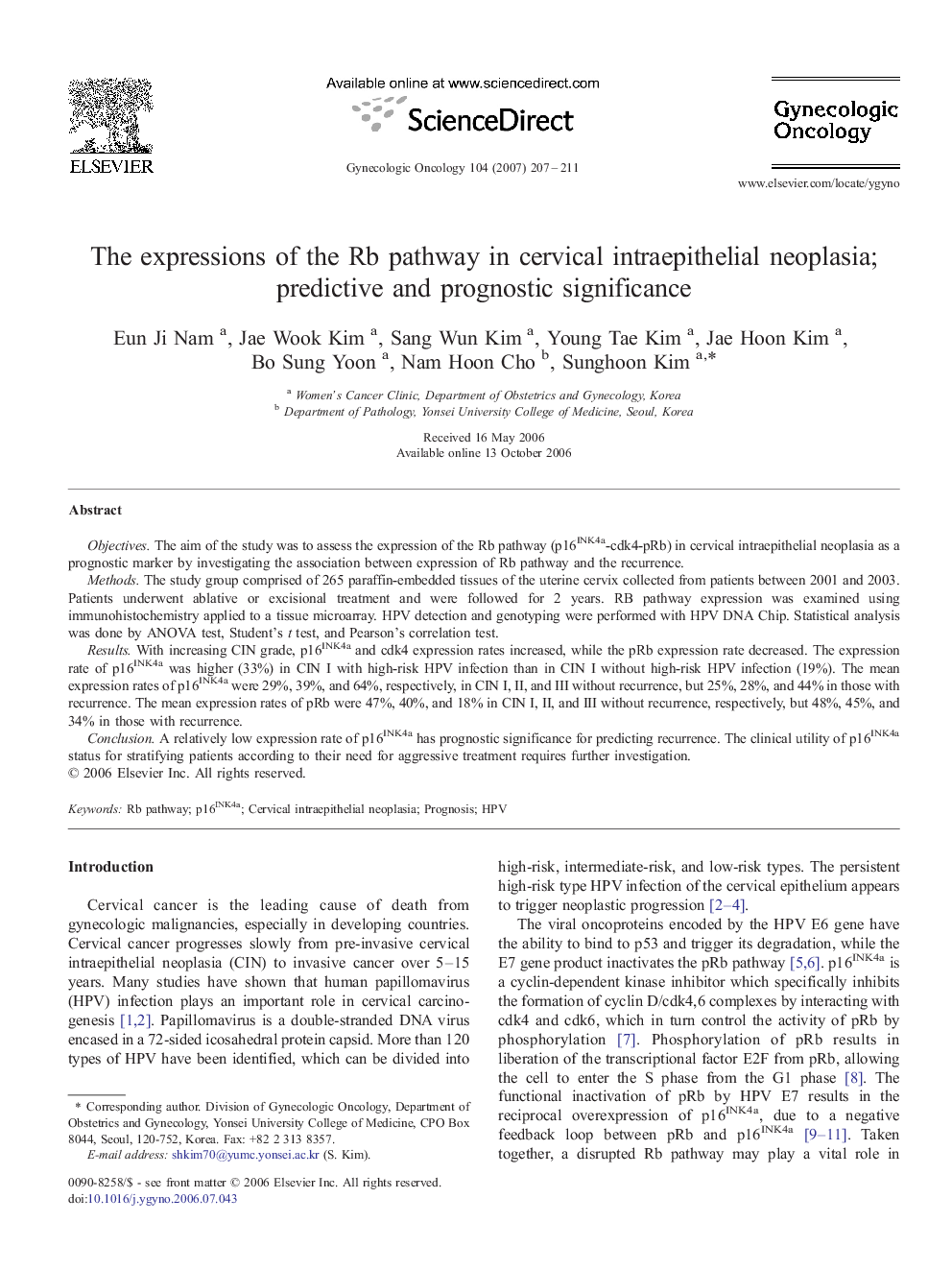| Article ID | Journal | Published Year | Pages | File Type |
|---|---|---|---|---|
| 3943606 | Gynecologic Oncology | 2007 | 5 Pages |
ObjectivesThe aim of the study was to assess the expression of the Rb pathway (p16INK4a-cdk4-pRb) in cervical intraepithelial neoplasia as a prognostic marker by investigating the association between expression of Rb pathway and the recurrence.MethodsThe study group comprised of 265 paraffin-embedded tissues of the uterine cervix collected from patients between 2001 and 2003. Patients underwent ablative or excisional treatment and were followed for 2 years. RB pathway expression was examined using immunohistochemistry applied to a tissue microarray. HPV detection and genotyping were performed with HPV DNA Chip. Statistical analysis was done by ANOVA test, Student's t test, and Pearson's correlation test.ResultsWith increasing CIN grade, p16INK4a and cdk4 expression rates increased, while the pRb expression rate decreased. The expression rate of p16INK4a was higher (33%) in CIN I with high-risk HPV infection than in CIN I without high-risk HPV infection (19%). The mean expression rates of p16INK4a were 29%, 39%, and 64%, respectively, in CIN I, II, and III without recurrence, but 25%, 28%, and 44% in those with recurrence. The mean expression rates of pRb were 47%, 40%, and 18% in CIN I, II, and III without recurrence, respectively, but 48%, 45%, and 34% in those with recurrence.ConclusionA relatively low expression rate of p16INK4a has prognostic significance for predicting recurrence. The clinical utility of p16INK4a status for stratifying patients according to their need for aggressive treatment requires further investigation.
